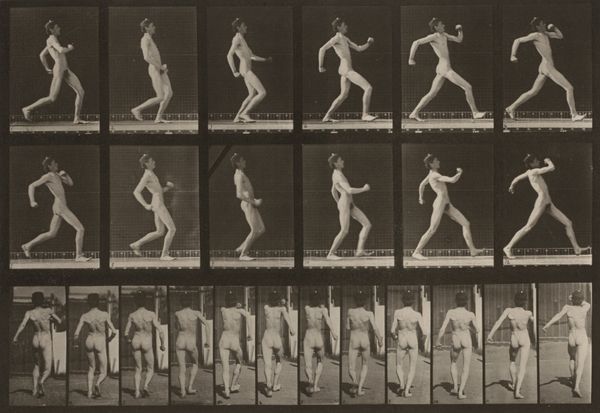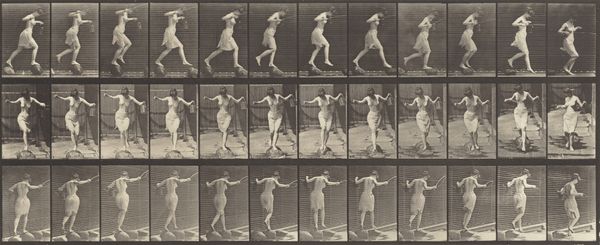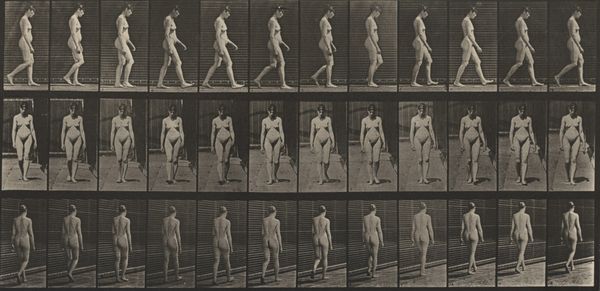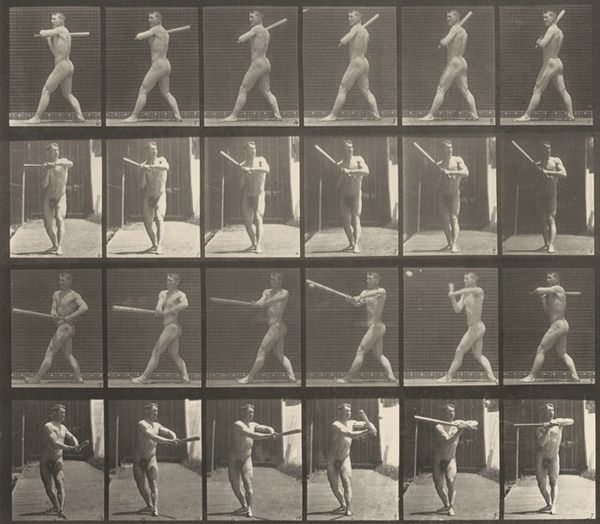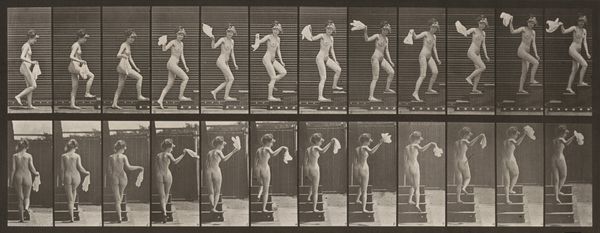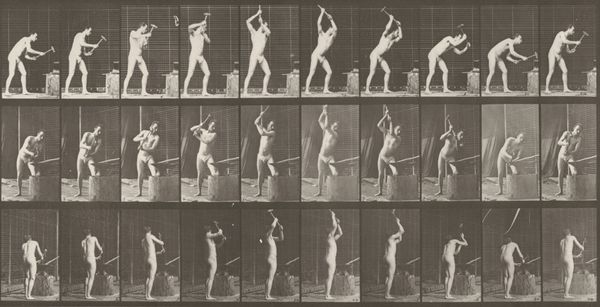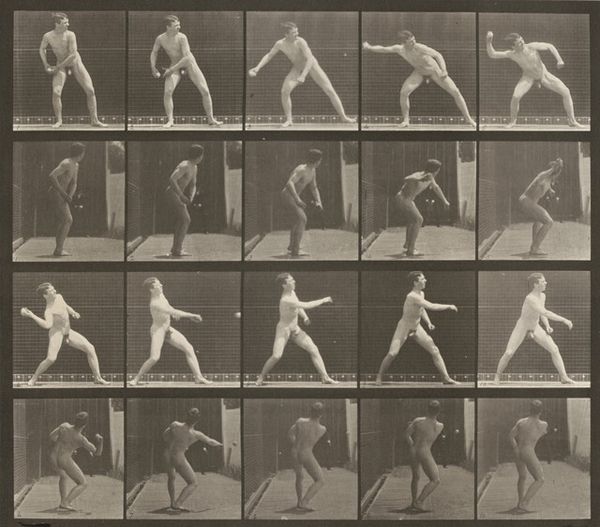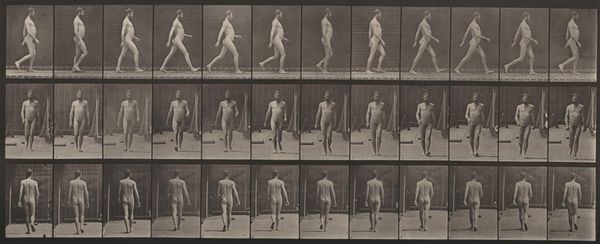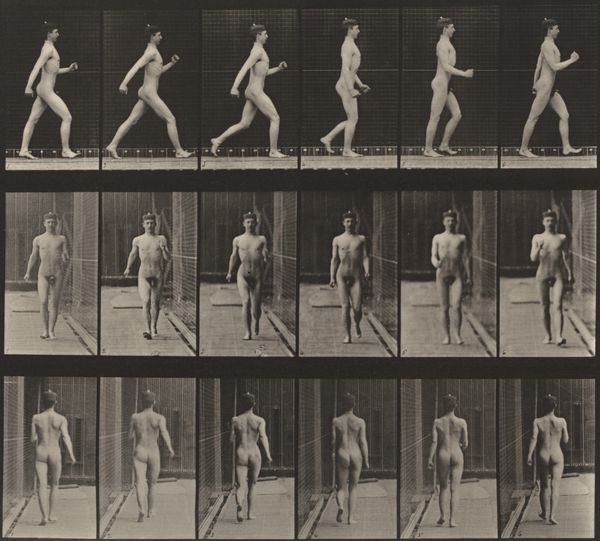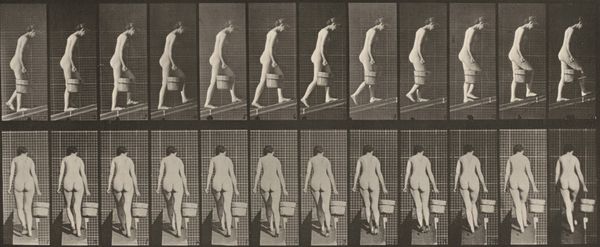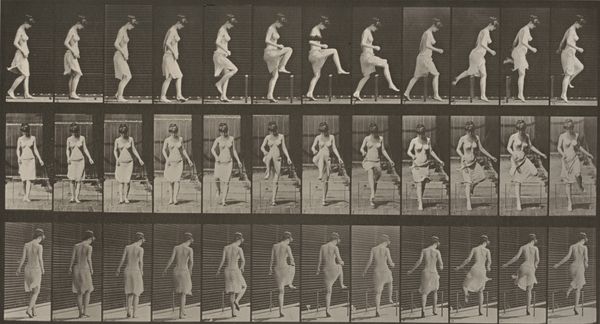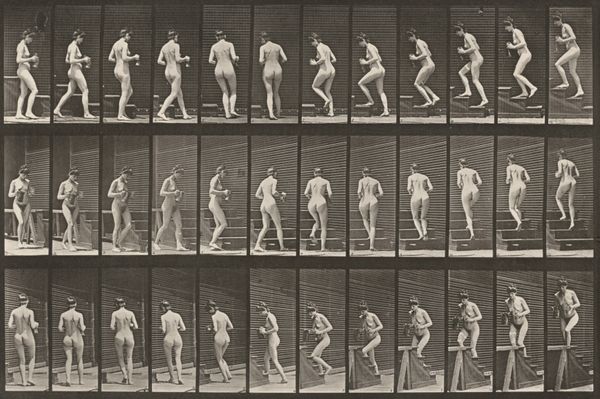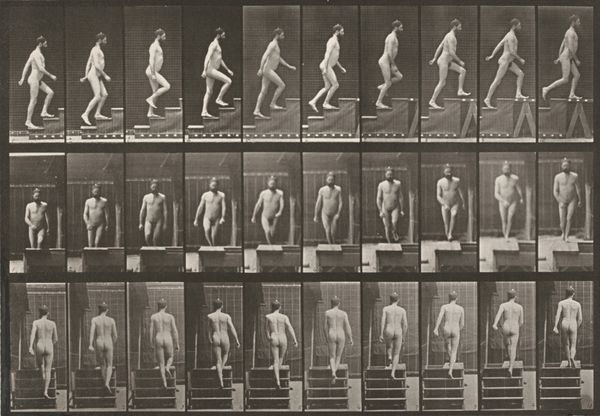
Plate Number 73. Turning around in surprise and running away 1887
0:00
0:00
print, photography
# print
#
figuration
#
photography
#
nude
Dimensions: image: 24.7 × 31.2 cm (9 3/4 × 12 5/16 in.) sheet: 48 × 60.9 cm (18 7/8 × 24 in.)
Copyright: National Gallery of Art: CC0 1.0
Editor: We're looking at "Plate Number 73. Turning around in surprise and running away" by Eadweard Muybridge, made in 1887. It's a photographic print showing a sequence of a nude woman’s movement. There's something unsettling about the figure’s obscured face and the fragmented motion. What do you see in this piece? Curator: The fragmented body in motion is key. Muybridge sought to capture reality with scientific precision, but this dissection of movement inadvertently reveals deeper anxieties about control, visibility, and the female body. Editor: Anxieties? Curator: Consider how the figure's face is always turned away or obscured. This absence can be read as a denial of individuality. What are we left with then? Only a body defined by its actions, observed, cataloged. It becomes less about her and more about *the act* of looking. Editor: So, you’re saying the image embodies cultural ideas about observation and objectification? Curator: Precisely! Think about Victorian society’s fascination with scientific inquiry juxtaposed with its strict moral codes around nudity. This photograph exists in that tension, presenting itself as objective while simultaneously participating in the gaze. Notice too how each frame is rigidly organized like an entomological display. Editor: Almost like pinning a butterfly to a board. Curator: An insightful observation! And this feeling resonates even now. By observing historical portrayals such as this, we reflect on the endurance of those gazes and the psychological toll they may have had, and still have, on women. Editor: I never thought about it that way before. Seeing how these images carry these older symbolic meanings really makes you consider the impact of observation on identity and control.
Comments
No comments
Be the first to comment and join the conversation on the ultimate creative platform.
